Harry T. Roman's Blog, page 21
July 24, 2014
Channeling Thomas Edison – Solar Chimneys
Thomas Edison would think this technology slick. Solar aficionados would probably brand it cool; and engineers would think it elegant and sophisticated. They would all be right, and also impressed by the size of the application.
Time for a mental picture…ready? Think of a several square mile in size circular greenhouse array where hot desert air enters the edge of the greenhouse. Rising from the center of the circular greenhouse is a chimney-like structure, perhaps twice the size of the Empire State building. Hot air rises, and in this design, quite rapidly - fast enough to spin electricity generating turbines at the base of the chimney, probably enough to generate 100-200 MW of power, enough for maybe 100,000 to 200,000 homes.
If you have ever felt a rush of air up a fireplace chimney, or exited an elevator in a tall office building and experienced a rush of air around the elevator chase, then you know what I am talking about here. Solar chimneys [often referred to as solar towers, or solar updraft towers] take this effect to much greater levels.
Check out this video:
This technology is not new, dating back to the turn of the last century, with several early designs built and tested in the 1930s. All that circular space at the bottom of the chimney can be used to grow crops and maybe ornamental plants. Locating these systems in arid or desert areas would be ideal; and might be a very useful power generation option for sun-soaked, resource poor developing countries.
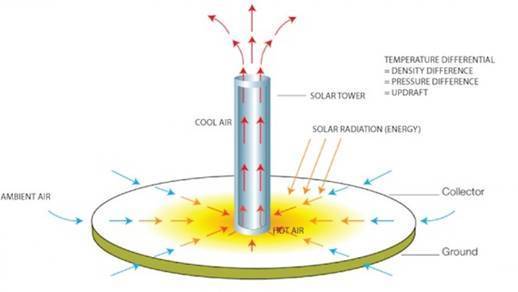
How It Works
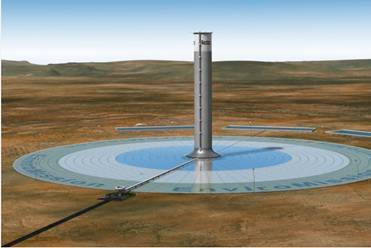
Design Concept
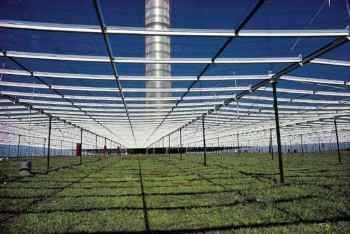
Greenhouse with Plants
The incorporation of solar absorbing materials inside the vast greenhouse area, something as simple as black containers holding water, stone or cement floors, could extend the daily hours of operation past when the sun sets-a kind of thermal flywheel.
In the next several years, sites in Arizona and West Texas could host demonstrations of this technology.
Editors Deep Dive
http://en.wikipedia.org/wiki/Solar_updraft_tower
http://news.nationalgeographic.com/news/energy/2014/04/140416-solar-updraft-towers-convert-hot-air-to-energy/
http://www.pennenergy.com/index/blogs/the-black-swan-blog/2012/12/Thermal-Updraft-Towe.html
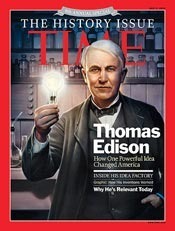 Thomas Edison said … “I’d put my money on the sun and solar energy. What a source of power! I hope we don’t have to wait until oil and coal run out before we tackle that. I wish I had more years left.”
Thomas Edison said … “I’d put my money on the sun and solar energy. What a source of power! I hope we don’t have to wait until oil and coal run out before we tackle that. I wish I had more years left.”Time ® is a registered trademark of Time Inc.
June 17, 2014
Edison and Tesla – Experts Weigh in
It seems somewhat fashionable today, especially among young folks, to believe Thomas Edison took unfair advantage of Tesla … but it’s not true. The experts and archivists at the Thomas Edison National Historical Park in West Orange, NJ cannot find anything on file to indicate acrimonious exchanges between these two great inventors. For a brief period of months, Tesla worked for Edison at one of his New York City shops on a specific project, and when that project was closed down, Tesla left. He did not even work directly for Edison. Somehow, the conspiracy theories continue to grind out all sorts of terrible things that Edison was purported to have done.

A very well documented book [Tesla: Inventor of the Electrical Age] by W. Bernard “Bernie” Carlson, noted technology author and professor at the University of Virginia, carefully analyzes this complex man. Consider some salient points Carlson makes about one of America’s first celebrity scientists.
Tesla was an astute self-promoter and gifted showman who cultivated a memorable and dramatic public image as an eccentric genius. He promoted his inventions by creating [fanciful and perhaps unrealistic] visions of future peace and prosperity. Unlike Edison, who started with an idea and drove it all the way through to establishing companies to manufacture his products- a classic vertically integrated entrepreneurial approach- Tesla preferred to patent, promote, and sell his inventions to investors and businessmen. What escaped Tesla was the need to do the nuts and bolts engineering, manufacturing optimization, and incremental improvements needed to make a product customer worthy.
Edison and Tesla saw the world very differently. Edison practiced what is called market-pull innovation, letting the demands of the customer drive the economics and such. Tesla practiced knowledge-push innovation, creating a vision for his technology and selling it that way.
Tesla advocates, often young folks, tend to see Tesla as the ultimate geek, unsullied by profits and debased by the give and take of the business world.
In many ways we have a need to cast comparisons of Tesla and Edison as good versus evil, but Carlson shows it is just not that kind of comparison. They are two men who looked at the world of invention from two distinctly different standpoints. Both men helped propel a young America forward, stimulate technological development and instill in millions of Americans the benefits of technology. Both men…giants of the times … succeeded … and, that is really what we need to remember.
See for yourself in the video below what the experts say about these two giants of electricity. Bernie Carlson and Leonard DeGraaf, archivist at the Thomas Edison National Historic Park, recently shared the dais at the Mark Twain historic home in Connecticut to discuss the Edison-Tesla interactions. Enjoy.
 Thomas Edison said … “I never perfected an invention that I did not think about in terms of the service it might give others … I find out what the world needs, then I proceed to invent …”
Thomas Edison said … “I never perfected an invention that I did not think about in terms of the service it might give others … I find out what the world needs, then I proceed to invent …”Time ® is a registered trademark of Time Inc.
May 12, 2014
Cleaning the Environment with Plastics – An Edison-like Innovation
Consider this equation:
Carbon bearing waste streams + Human ingenuity
= Plastic + Cleaner environment
Any waste stream containing carbon now can be used to make plastics-no longer requiring oil based plastic technology. It cleans the air and reduces the need for petroleum-based chemistry/products. Who would not want to salute this?
It all started 10 years ago in a dorm room in Princeton, University. The chemistry has been known for quite some time, but some very ingenious young folks make it economically possible … just like Edison when he beat out about 20 international invention teams to make the electric light bulb commercially practical.
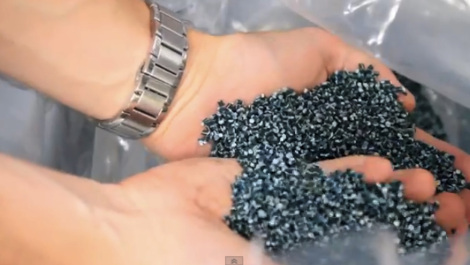
Pellets of plastic produced by the process
The heart of the innovation is bio-catalyst technology, a very powerful chemical enabler. Carbon bearing gas is first captured, and then liquefied. The catalyst is added and grabs the carbon out of the liquid, helping re-arrange it in long hydrocarbon chains … plastic … a plastic that resembles polypropylene.
AirCarbon™ is a naturally biodegradable polyester that can be recycled in multiple use cycles, and can be formulated into both biodegradable and non-biodegradable grades according to the durability and carbon capture needs of a given application.
The motivator for the young entrepreneurs was to reduce global warming. The young entrepreneurs call their product AirCarbon™; and they worked long and hard at odd jobs to keep their idea alive. Their company is Newlight Technologies, LLC of Irvine California.
Independent lab testing confirms this process removes more carbon from the atmosphere than their manufacturing emits-carbon negative. First products to be made from this will include chairs, food containers, auto parts, and cell phone cases.
Come to think of it, Thomas Edison’s favorite science was chemistry. He would have had a blast with AirCarbon™ technology!
Editor’s Deep Dive
http://www.usatoday.com/story/news/nation/2013/12/30/plastic-from-carbon-emissions/4192945/
http://www.newlight.com/aircarbon-thermoplastic.php
http://grist.org/list/this-plastic-is-made-out-of-carbon-sucked-from-the-air/
http://www.rdmag.com/award-winners/2013/08/carbon-negative-plastic
 Thomas Edison said … “When I have finally decided that a result is worth getting, I go ahead on it and make trial after trial until it comes.”
Thomas Edison said … “When I have finally decided that a result is worth getting, I go ahead on it and make trial after trial until it comes.”Time ® is a registered trademark of Time Inc.
May 1, 2014
Inventions Thomas Edison Would Love: Energy Storage
We all know about energy storage as we routinely charge our cell phones and hand held devices every evening. That same battery technology we employ in electric/hybrid vehicles. Thomas Edison charged his electric vehicles in his garage every evening-all the way back in 1908. In a world where we integrate intermittent solar and wind energy systems into our electric utility grids, developing robust, large-scale, energy storage systems makes sense. In fact, energy storage on a utility scale has been around for many years. Hydroelectric dams are the prime example, but the best hydro sites already have been used. Here are some ways we may be storing utility grade electricity in the years to come.
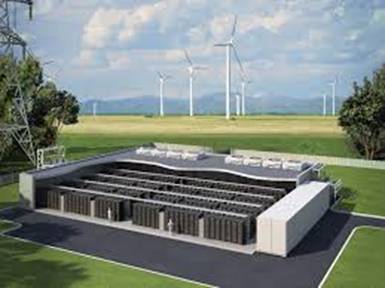 Advanced megawatt size battery storage, perhaps in the range of 5-20 MW blocks, may use unique combinations of chemical substances like sodium-sulfur, zinc-bromide/zinc-chlorine, and vanadium are now being tested and deployed. These systems are capable of being deeply discharged and recharged quickly for they must be capable of smoothing out surges on the national grid caused as solar electric and wind energy systems come off-line as solar or wind conditions wane. Designed to be highly modular for ease of construction and expansion, such systems might be located along existing utility system transmission line rights-of-way or near wind machine farms.
Advanced megawatt size battery storage, perhaps in the range of 5-20 MW blocks, may use unique combinations of chemical substances like sodium-sulfur, zinc-bromide/zinc-chlorine, and vanadium are now being tested and deployed. These systems are capable of being deeply discharged and recharged quickly for they must be capable of smoothing out surges on the national grid caused as solar electric and wind energy systems come off-line as solar or wind conditions wane. Designed to be highly modular for ease of construction and expansion, such systems might be located along existing utility system transmission line rights-of-way or near wind machine farms.
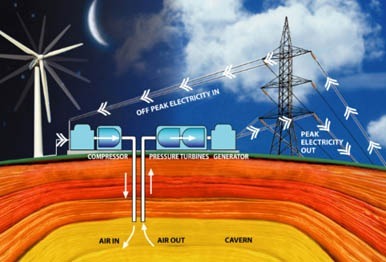 A much larger energy storage system might involve compressed air energy storage (CAES), where large amounts of compressed air are pumped into an underground cavern (natural or man-made). These cavern-filling periods would occur during off-peak grid periods or evening hours when load is low and excess generation capacity is available. Later, this valuable reservoir of stored energy can be taped, with the air released through turbo-generators to produce large amounts of utility-grade electricity. Of course the location of such a large storage system is dependent upon finding a suitable area for hosting the underground cavern. Since 1991, a 110 MW CAES plant has been in operation in McIntosh, Alabama. Another such plant, 290 MW, has been in operation in Huntorf, Germany since 1978.
A much larger energy storage system might involve compressed air energy storage (CAES), where large amounts of compressed air are pumped into an underground cavern (natural or man-made). These cavern-filling periods would occur during off-peak grid periods or evening hours when load is low and excess generation capacity is available. Later, this valuable reservoir of stored energy can be taped, with the air released through turbo-generators to produce large amounts of utility-grade electricity. Of course the location of such a large storage system is dependent upon finding a suitable area for hosting the underground cavern. Since 1991, a 110 MW CAES plant has been in operation in McIntosh, Alabama. Another such plant, 290 MW, has been in operation in Huntorf, Germany since 1978.
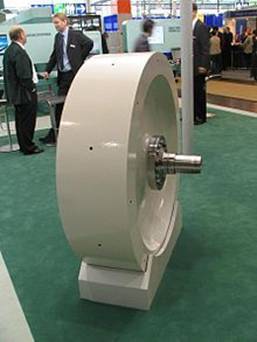 A different approach to energy storage at the local level – i.e. home, commercial application – is the flywheel. A flywheel is a high speed rotating mechanical device that is used to store energy and can be discharged as needed to return that stored energy in the form of electricity. Flywheels can store kilowatts worth of power; and can be banked together to deliver larger megawatt size blocks of power. These systems are likely to be used for everything from commercial to utility applications-and may someday also find application in residential settings. Key concerns here are the materials considerations of the flywheels themselves-delicately balanced to spin at more than 10,000 RPM. Tremendous forces are evident in flywheel applications, with safety being of paramount concern. Nanotechnology is making inroads here, resulting in light-weight, very strong materials for the spinning components of the system.
A different approach to energy storage at the local level – i.e. home, commercial application – is the flywheel. A flywheel is a high speed rotating mechanical device that is used to store energy and can be discharged as needed to return that stored energy in the form of electricity. Flywheels can store kilowatts worth of power; and can be banked together to deliver larger megawatt size blocks of power. These systems are likely to be used for everything from commercial to utility applications-and may someday also find application in residential settings. Key concerns here are the materials considerations of the flywheels themselves-delicately balanced to spin at more than 10,000 RPM. Tremendous forces are evident in flywheel applications, with safety being of paramount concern. Nanotechnology is making inroads here, resulting in light-weight, very strong materials for the spinning components of the system.
In the 1880s, Thomas Edison knew the value of energy storage on his then developing electric utility system, and with solar and wind technologies being used ever more often, today, so will today’s utility system operators.
Editor’s Deep Dive
http://www.sandia.gov/ess/
http://en.wikipedia.org/wiki/Energy_storage
http://www.rdmag.com/news/2013/05/engineers-explore-compressed-air-renewable-energy-storage
http://www.beaconpower.com/products/about-flywheels.asp
Additional Edison Muckers Articles:
Inventions Thomas Edison Would Love: Storage Batteries
Inventions Thomas Edison Would Love: Solar Storage Technology
Solar Energy – the Fabric of Your Life
 Thomas Edison – Man of the Millennium – said … “I find out what the world needs. Then I go ahead and try to invent it.”
Thomas Edison – Man of the Millennium – said … “I find out what the world needs. Then I go ahead and try to invent it.”Time® is a registered trademark of Time Inc.
April 14, 2014
Edison Could Work at Google!
Yeah baby, Thomas Edison could certainly work at Google. The notoriously imaginative and cutting edge company would welcome him with open arms, even though he never got past third grade before being educated at home by his mother.
In a bold interview with the New York Times, Google talked about what traits it looks for when hiring talent; and if colleges and high schools are listening, it might give them cause to re-consider how they teach tomorrow’s talent. Laszlo Bock, their senior VP of people operations lists five attributes – in this order – they look for in new hires; regardless of whether a candidate has a formal college degree or not:
Learning ability-to process on the fly; to synthesize data/information from many sources [it’s not simply IQ]
Emergent leadership-not traditional leadership; knowing when to lead and when to step back and follow others
Working together to solve problems-owning the problem and dynamic teamwork
Intellectual humility and knowing how to learn from failure
Expertise is OK, but people with drive and desire can easily overcome this.
In the Google world, one’s college degree is not a guarantee of performing well on-the-job. It is not about what you know, but what you can do with what you know, i.e. the ability to find utility for great ideas and create wealth for the company; to help strategically position it to compete in a globally competitive world. If you can perform this kind of magic with what you know, Google does not care if your earned that ability behind a desk in college or working in the real world and never got a college degree.
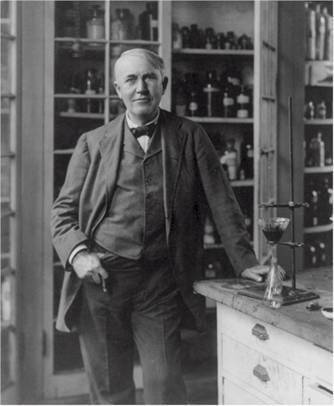 Thomas Edison thought this way about the talent he hired as well. Many a college educated man applying for a job at the legendary Edison West Orange Labs left disappointed when a non-college man, or technician, walked away with the job they had hoped to attain. Old Tom even had a controversial test he administered to whoever came seeking employment.
Thomas Edison thought this way about the talent he hired as well. Many a college educated man applying for a job at the legendary Edison West Orange Labs left disappointed when a non-college man, or technician, walked away with the job they had hoped to attain. Old Tom even had a controversial test he administered to whoever came seeking employment.
Tom’s mom, Nancy Elliot Edison, encouraged Tom to practice some simple rules, which he felt greatly aided his long life of uncommon success. She always impressed upon him:
Read, read, read … everything not just what you like. Appreciate all literature.
Do not be afraid to fail-learn from it. Keep trying.
Not everything that is valuable comes from books-experience the world.
Never stop learning!
We think Google would agree.
Tom’s experiments in his basement lab of the modest Milan, Ohio home he grew-up in was a source of trepidation for his father Samuel. There was plenty of noise, strange equipment, “pops and bangs”, and ever-present odors; but his normal-school-trained mother knew well the young man’s sense of curiosity and drive would soon find true direction … with some gentle encouragement. She certainly was right.
So Mr. Bock, when should Tom report for work? Might we suggest his mother may be available as well…maybe a kind of consultant role?
Check out Google’s doodle in celebration of Thomas Edison’s 164th birthday in 2011.
 “Our schools are not teaching students to think. It is astonishing how many young people have difficulty in putting their brains definitely and systematically to work …”
“Our schools are not teaching students to think. It is astonishing how many young people have difficulty in putting their brains definitely and systematically to work …”Time® is a registered trademark of Time Inc.
April 1, 2014
Edison Invention Challenge – 2014 Awards
Thirty-six teams of students came to compete in the fourth annual Thomas Edison Invention Challenge. Students ranging from 5th grade to high school, participated in this popular invention competition. Last year twenty-seven teams were involved.
Held on the campus of New Jersey Institute of Technology [NJIT] on Saturday, March 29th, 2014, this energy technology themed competition capped 4 months of work by the student teams. Teams from all over northern and central New Jersey and Staten Island got up bright and early to bring their inventions and excitement to NJIT. Judges examined each team entry and interviewed them to learn the specifics of their creations. Here below are photos and explanations of the winning entries and teams. In addition to the three top-ranking awards highlighted below, each judge gave out an honorable mention award to a deserving team in a special category.

1st Place Team from Northern Highlands Regional High School – Invented a Solar Survival Kit

2nd Place Team from High Point Regional High School aka “The Green Team” – Invented the Eye in the Sky, a fuel cell/battery powered quad-copter for surveillance

3rd Place Team from Waldwick High School aka “Team Warriors” – Invented a Solar Cooler
Great work student teams! Thomas Edison would be proud. To see more pictures from this event, visit and ‘like’ our Facebook page.
 “Hell, there are no rules here – we’re trying to accomplish something.”
“Hell, there are no rules here – we’re trying to accomplish something.”Time ® is a registered trademark of Time Inc.
March 20, 2014
Thomas Edison – Humanitarian
In 1996, Life Magazine proclaimed Thomas Edison the “Man of the Millennium’ … not the decade or century, but the millennium-1,000 years! That is a very bold statement, not spoken lightly. Recently, Time magazine has also lavishly spoken of the relevance and importance of Thomas Edison.
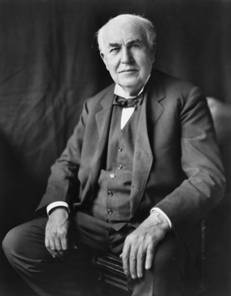 His exploits and value to the American economy and society are legendary-the man who gave us motion pictures, phonograph, the light bulb and electric power industry, vastly improved telephones, and commercial R&D labs that Fortune 500 companies use to give birth to an endless march of new products. He is the man most associated with technology based progress. Many years after the creation of these products his accomplishments are still responsible for one-tenth of our gross national product today, as well as about one-fourth of all the jobs on the planet.
His exploits and value to the American economy and society are legendary-the man who gave us motion pictures, phonograph, the light bulb and electric power industry, vastly improved telephones, and commercial R&D labs that Fortune 500 companies use to give birth to an endless march of new products. He is the man most associated with technology based progress. Many years after the creation of these products his accomplishments are still responsible for one-tenth of our gross national product today, as well as about one-fourth of all the jobs on the planet.
Digging a bit deeper into Edison the man, there is much to learn about his humanity, starting with this quote:
“My desire is to do everything within my power to free people from drudgery and create the largest measure of happiness and prosperity.”
This is a powerful message for peace through prosperity, linking technological progress and society’s well-being, something Edison felt viscerally.
“The world owes nothing to any man, but every man owes something to the world.”
How many realize his other humanitarian efforts like:
Philanthropic activities engaged in by he and his dear wife Mina, spanning the gamut from civic to national causes, especially education
Work during WWI with the US Navy to reduce the impacts of the German U-boat scourge
Loaning free of charge his patents to Marconi to begin the development of radio telegraphy/wireless and later radio
Allowing the free use of his fluoroscope patent(s) for medical use
Promoting the use of solar energy [as early as 1910] as a new energy resource
“I’d put my money on the sun and solar energy. What a source of power! I hope we don’t have to wait until oil and coal run out before we tackle that. I wish I had more years left.”
Biomass farming to develop plant species for making artificial rubber
Use of natural materials in his inventions as much as possible
Development of low cost concrete houses to address housing shortages.
And these humanitarian aspects of Edison kept on in the family:
Son Charles, governor of NJ, Secretary of the Navy, patron of the arts
Son Theodore, ardent environmentalist- like his mother Mina, protector of riparian lands in Fl and GA, and anti-war advocate
The Edison family gave freely and generously of themselves to the country.
And after Thomas Edison’s death, his family gave his invention factory and their Glenmont home to the American people, to celebrate Dad’s work and as a classroom for future entrepreneurs. Humanitarian principles ran deep in the Edison family.
 Thomas Edison said … “My main purpose in life is to make enough money to create ever more inventions … The dove is my emblem … I want to save and advance human life, not destroy it … I am proud of the fact that I have never invented weapons to kill …“
Thomas Edison said … “My main purpose in life is to make enough money to create ever more inventions … The dove is my emblem … I want to save and advance human life, not destroy it … I am proud of the fact that I have never invented weapons to kill …“Time ® is a registered trademark of Time Inc.
March 11, 2014
Student Ann’s New Flashlight Reflects Off Thomas Edison
Young Ann Makosinski, 15, of Victoria Canada took top honors [a $25,000 scholarship] at a Google invention competition with an elegant, and environmentally relevant design for a hand-held, human-heat powered flashlight. Yes, you heard that right … human-heat powered. Harnessing this heat through a process known as thermoelectric heat conversion, Ann’s invention allows a three-light flashlight to stay on as long as it is held in one’s hand. No “on” or “off” switch, just the presence of the human hand to turn it on. Is that cool or what; and no spent batteries to deal with later. The perfect flashlight for campers, hikers, emergency personnel or just there at the ready at home.
She accomplished her task just like many inventors before … the old fashioned way; and you can bet she had her share of mistakes, but as Thomas Edison would have said, “Fail your way to success.” And like most inventors, there are more improvements she wants to make to her product-like making it even brighter. Then there is the matter of her pending patent on this unique invention. The inspiration for the flashlight came from a friend in the Philippines who did not have the electricity to study at night, and Ann thought her flashlight might help solve the problem. Ann started with a real need and worked from there-necessity being the mother of invention as the old chestnut goes. Thomas Edison would have been proud Ann!
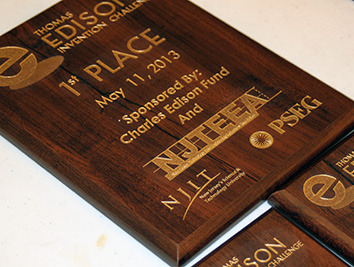 Speaking of Edison, at the end of March, the Edison Innovation Foundation will be hosting its 4th annual Thomas Edison Innovation Challenge where student teams from 6th thru 12th grade will compete with their alternate energy system inventions. Forty-three teams will display and discuss their work to panels of judges from the scientific and engineering communities. The annual challenge when first implemented only had fourteen teams, and now it continues to grow by leaps and bounds. Watch for more news about this event and visit this website to see some photos from previous contests. Lest you think the younger kids cannot compete, the first year of the Edison invention challenge a 6th grade team from a rural NJ school took top honors for an agricultural application involving wind energy – and a local farmer built and now uses their invention!
Speaking of Edison, at the end of March, the Edison Innovation Foundation will be hosting its 4th annual Thomas Edison Innovation Challenge where student teams from 6th thru 12th grade will compete with their alternate energy system inventions. Forty-three teams will display and discuss their work to panels of judges from the scientific and engineering communities. The annual challenge when first implemented only had fourteen teams, and now it continues to grow by leaps and bounds. Watch for more news about this event and visit this website to see some photos from previous contests. Lest you think the younger kids cannot compete, the first year of the Edison invention challenge a 6th grade team from a rural NJ school took top honors for an agricultural application involving wind energy – and a local farmer built and now uses their invention!
Listen to what Ann says about young folks and inventing … “I think it’s a lesson that children can innovate. With the right incentive and environment, they can be quite innovative.”
Maybe we need all our schools to challenge kids with invention opportunities. This is what the currently popular STEM educational philosophy is supposed to be about. Bravo Ann!
February 25, 2014
Rocking Your Solar Panels
Who says only humans can feel the beat of pop-rock music. Turns out that a certain kind of solar cell can too; and in doing so, radically increase its performance.
 Researchers in the UK, at Queen Mary University of London and Imperial College London have discovered that blasting beats at zinc-oxide solar cells makes them perform up to 50% better. According to the researchers, pop and rock music gets the cells going more than classical music, but they suggest that any noise with a broad range of frequencies will produce similar effects.
Researchers in the UK, at Queen Mary University of London and Imperial College London have discovered that blasting beats at zinc-oxide solar cells makes them perform up to 50% better. According to the researchers, pop and rock music gets the cells going more than classical music, but they suggest that any noise with a broad range of frequencies will produce similar effects.
Zinc-oxide nanorod designed solar cells are capable of responding to a broad range of sound frequencies, particularly that of rock music. The more energy delivered by the sound, the more the pressure wave deforms the rods resulting in a stronger electric field generated, which converts more incoming light to electricity-i.e. a higher conversion efficiency/better overall performance. The challenge now is two-fold: develop better solar cells; and optimize them for sound to energy conversion. And of course to do this as cheaply as possible. Today, zinc-oxide nanorod cells are just 1-2 percent efficient, but tomorrow they could be significantly greater.
Think of all the natural places there is a broad range of sound available to help boost nearby solar cell efficiencies, like: airports, large commercial roof-top air conditioning units, power plants, industrial process sites, railroads and transportation centers, and possibly along highways. Why let the noise go to waste……co-locate solar cells nearby.
Rock on!
Editor’s Deep Dive
http://www.newscientist.com/article/mg22029424.600-pop-music-makes-solar-cells-produce-more-electricity.html#.Uvj6GXmYYdU
http://www3.imperial.ac.uk/newsandeventspggrp/imperialcollege/newssummary/news_6-11-2013-11-35-3
http://physicsworld.com/cws/article/news/2013/nov/28/solar-cells-get-down-to-pop-music
 Thomas Edison said … “I’d put my money on the sun and solar energy. What a source of power! I hope we don’t have to wait until oil and coal run out before we tackle that. I wish I had more years left.”
Thomas Edison said … “I’d put my money on the sun and solar energy. What a source of power! I hope we don’t have to wait until oil and coal run out before we tackle that. I wish I had more years left.”Time ® is a registered trademark of Time Inc.
February 11, 2014
Thomas Edison Teacher Awards – The Winners!
 In honor of Thomas Edison’s birthday, February 11th, the Edison Innovation Foundation announces the winners of its recent “Nominate Your Favorite Teacher Contest”; and here are the results!
In honor of Thomas Edison’s birthday, February 11th, the Edison Innovation Foundation announces the winners of its recent “Nominate Your Favorite Teacher Contest”; and here are the results!
First Place $500 – Mrs. Tracie Kania, Smith Middle School, Troy, Michigan
Second Place $250 – Mr. Anthony Cho, Mechanics Grove Elementary School, Mundelein, Illinois
Third Place $150 – Ms. Maggie Kane, Granite Mountain Middle School, Prescott, Arizona
Due to an overwhelming number of qualified entries, runner up awards of $50 will also be given to:
Ms. Vicky Jordan, Wellington Middle School, Wellington, Colorado
Mr. Ken Rudolph, Sullivan College of Technology and Design, Louisville, Kentucky
Mr. Kenton Swartley, Cedar Falls High School, Cedar Falls, Iowa
Ms. Belinda Gonzales, William J. Clinton Elementary School, La Joya, Texas
Mrs. Julie Seymour, Monument Academy, Monument, Colorado
We also have two Goodreads book giveaway winners who have won a beautiful, hardcover, illustrated edition of “Edison and the Rise of Innovation” – signed by the author, Leonard DeGraaf. Each book also packaged with Edison-themed lightbulb paperclips and a brief pocket biography. Congratulations to our two winners:
Sandy McCarthy from Pheonix, Arizona
Sarah Moore from Alberta, Canada
Congratulations to all. Stay tuned for future Edison Innovation Foundation events.
John P. Keegan
President and CEO
Edison Innovation Foundation
Harry T. Roman's Blog
- Harry T. Roman's profile
- 2 followers




